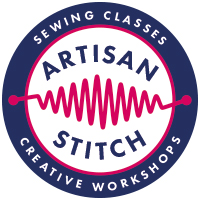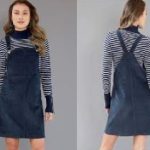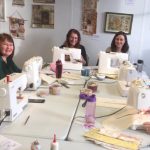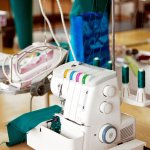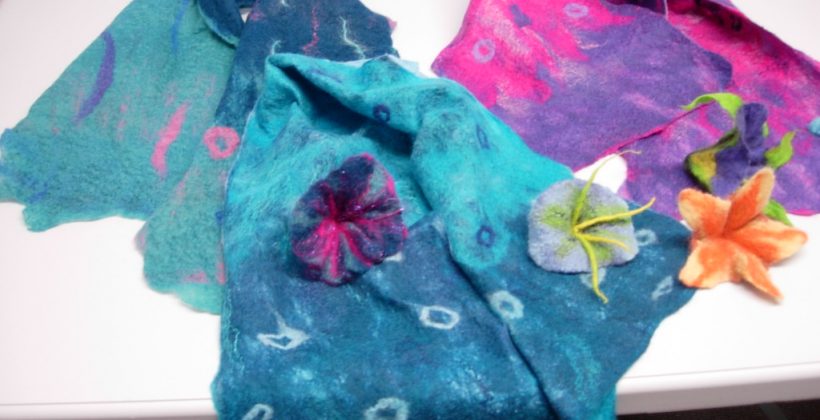
Friday was felting workshop day. Wet-felting is a traditional skill which creates a strong but soft fabric from loose wool fibres. Felt is an ancient fabric; the process dates back thousands of years. It is incredibly hard-wearing and has been used for all manner of items from clothing and footwear to housing!
Because of the lanolin in the wool fibre, felt is water-repellant. It will only get really wet when it’s immersed in water and soaked. Many Nomadic tribes make their homes from felt, known as Yurts. When it’s time to move on, the Yurts are rolled up and transported to the next settlement.
The Felting Workshop
However, on Friday’s felting workshop, we were concentrating on making scarves in luscious jewel colours. We laid down the merino fibres in fine layers to create our desired patterns. Getting the thickness of the layers correct requires a degree of skill and practice: too thick and you’ll get a stiff, lumpy scarf; too thin and you’ll get holes.
Once the layers have been laid down, then it’s time for the really hard work! The students sprinkled lots of warm soapy water over the fibres until they’re thoroughly wetted. Then then the item needs to be rolled up to 500 times. Ensuring it’s rolled from each end and on each side ensures even felting.
The Chemistry of Felting
The soap encourages the scales along the shaft of the fibre to open up. The rolling then causes the scales to lock together and form the felted fabric; similar to shrinking a jumper in the washing machine. While it’s damp, the felted fabric can be stretched and pulled to shape. However, once the felt is dry, there’s no going back.
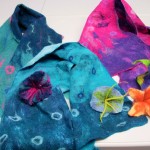
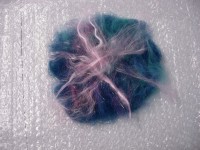
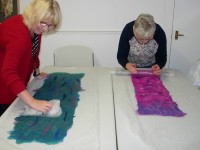
Felting students rolling their scarves
